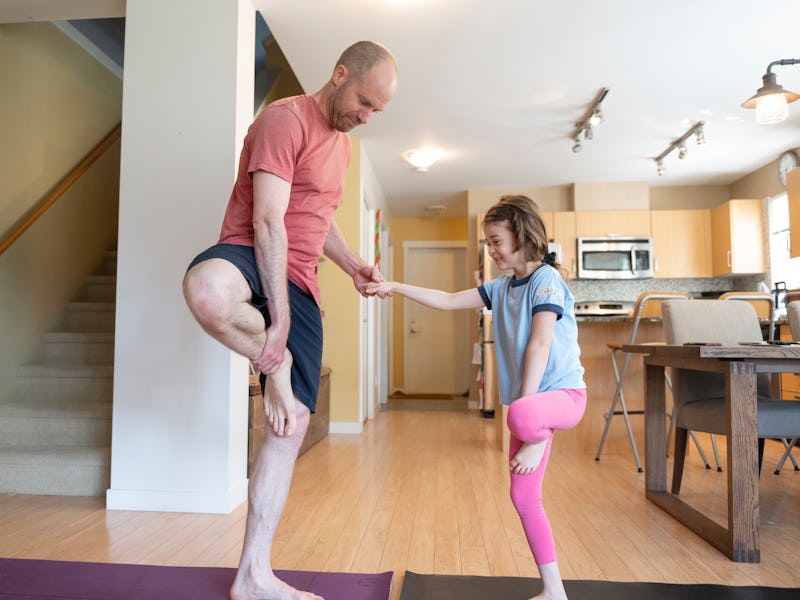This Simple Test Could Predict How Fast Your Mind and Body Are Aging
Try balancing on one leg.

Aging brings on a barrage of changes to the mind and body — all of them seemingly happening at once. This bombardment makes it difficult to measure how well our bodies are holding up to the test of time. But a new study identified one simple task that could help predict anyone’s degree of physical — and mental — decline.
According to a new paper published today in the journal PLoS, the ability to balance on one leg could be a helpful indicator of neuromuscular aging. The researchers, from Taiwan and Minnesota, found that balancing on one leg offered a larger window into the aging process than walking stance or standing on two legs, two other exercises researchers use to measure aging.
In the cross-sectional study, 40 healthy adults over age 50 in Minnesota performed a series of strength and balance tasks. The researchers tested their grip and knee strength, and participants had to stand for 30 seconds on both legs with their eyes open and then closed, and also had to stand on one leg — first their dominant and then non-dominant leg with eyes open. The team also measured how the participants walked using a motion capture system.
The team found that of all these tests, balancing on one leg offered the most insight into neuromuscular aging. Walking motion didn’t seem to change with age, but they did find that several balance and strength measurements did decline.
“This finding is significant because this measurement does not require specialized expertise, advanced tools, or techniques for measurement and interpretation,” the authors write in the paper. “It can be easily performed, even by individuals themselves.”
Balance, especially when standing on one leg, is so important because it requires you to use neuromuscular control, sufficient muscle strength, and attention to multiple sensations. Standing on one leg, they also found, is a valid measure of frailty, likelihood to fall, and independence.
The researchers also underscore that balancing on one leg is an under-explored way to measure neuromuscular aging. They also found that since standing on one leg requires our minds to rapidly assess multiple sources of information at once, it undergoes the fastest decline in a healthy population.
If you’re looking for a regular way to check in with the health of your nervous and muscular systems, standing on one leg for as long as you can is a good technique.